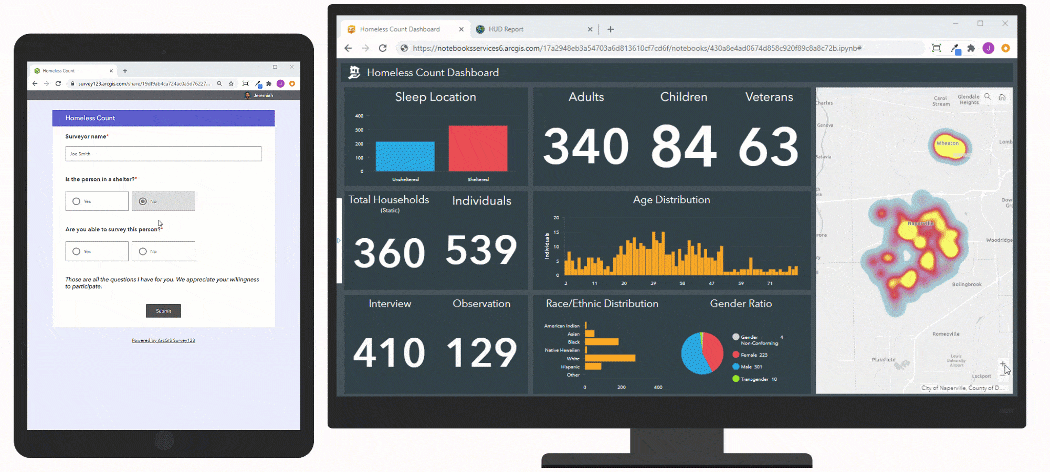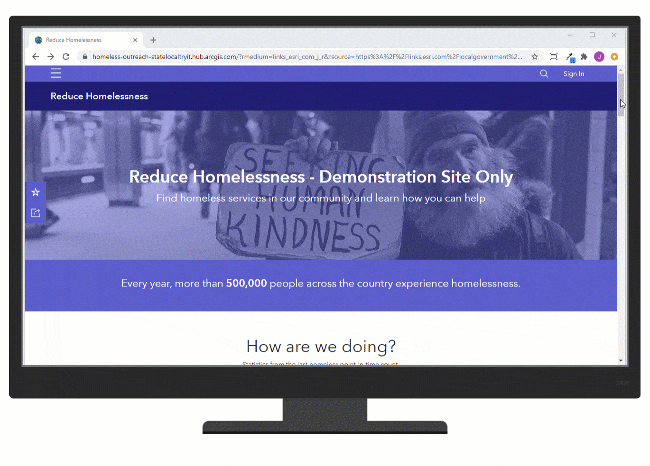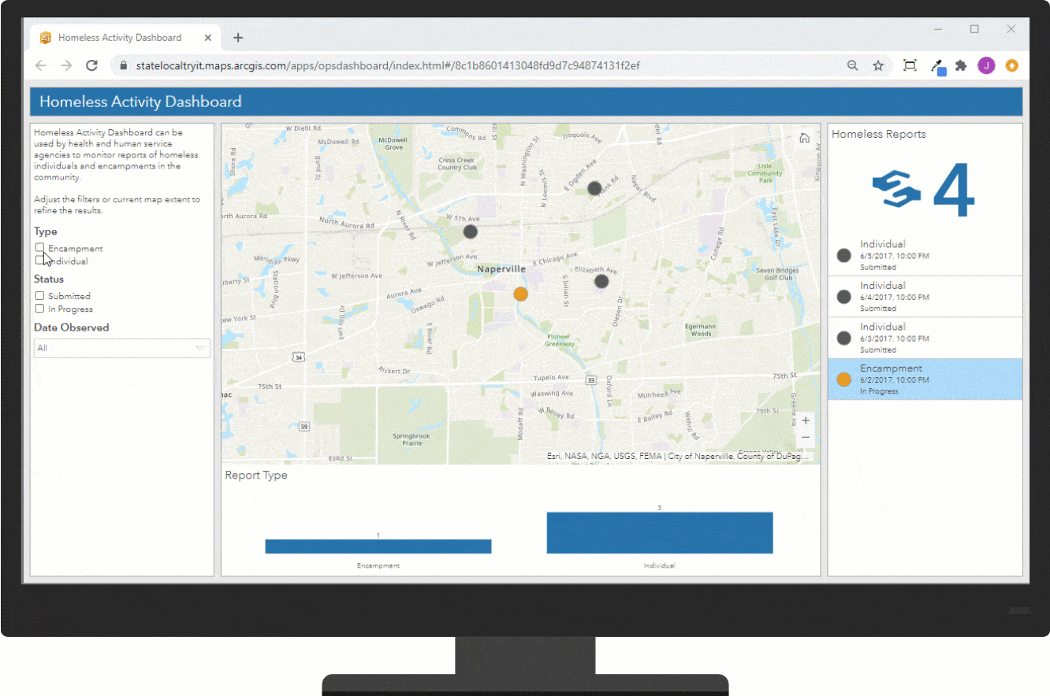Homelessness is a complex problem brought on by the lack of affordable housing, unemployment, a lack of mental health services and personal hardship. It is a human tragedy that is straining social resources and the capacity of local governments. The coronavirus disease 2019 (COVID-19) pandemic has many facing additional unemployment, evictions and additional mental stress. At the same time health and human services agencies are dealing with increasing service demands, limited access to technology and real-time data is impacting program effectiveness. This lack of information makes it difficult to determine whether strategies are working, and policy changes are having an impact on homelessness.
The 2019 HUD Point-in-Time Count, indicated 17 out of every 100,000 people were experiencing homelessness, a number that will likely increase in 2021. One-third of those identified as experiencing homelessness were living on the street or in abandoned buildings.
Three recently enhanced ArcGIS Solutions are designed to help count homeless individuals and activity in your community, educate your community about local issues and promote available resources, and help to determine where the greatest need is.
Conduct homelessness point-in-time counts
The Department of Housing and Urban Development (HUD) requires Continuum of Care (CoC) communities to conduct an annual count of people experiencing homelessness. This count identifies who are unsheltered, sheltered in transitional housing, an emergency shelter, and safe havens. The Homeless Point-in-Time Counts solution provides the ability to rapidly conduct the homeless counts, visualize the results and create reports. Volunteers can use the Homeless Counts survey on a mobile device to quickly capture their interviews. Program managers can use the Homeless Count Dashboard to view the results in real time. HUD has specific guidelines that govern how CoC communities must report the results of their point-in-time counts. After the assessment, the program manager can then generate reports meeting the HUD requirements using the HUDReport Notebook.

Help individuals experiencing homelessness
A common myth is that people experiencing homeless are from a different community than which they are currently living. Surveys have shown over 70 percent of homeless persons have lived in the local area before becoming unhoused. Therefore, many agencies face the need to educate their own community. In addition to education, many people are on the brink of becoming homeless. By providing people at risk locations of resources and partner agencies, they can find help to keep them in housing. The Homeless Outreach solution can be used educate the public and help individuals experiencing homelessness find available resources. You can use the Reduce Homelessness site to engage with your community. This site includes information about relevant point-in-time count summaries, finding homeless services, and ability to enlist for volunteers. For the agencies supporting this effort, a Health Resource Inventory app can help manage this information for the public.

Reduce homelessness
Homelessness counts are typically conducted on a single night in January. However, this doesn’t necessarily reflect the extent of ongoing homelessness activity in a community. The Homeless Risk Reduction Solution can be used to identify where regular reports of homeless activity and assess overall risk areas. Your organization can use the Homeless Activity Reporter survey for ongoing reports of homelessness and tools to deploy outreach teams. In addition, data analysts can use the Homeless Risk Reduction ArcGIS Pro project to identify areas in their community at risk of generating homelessness, and how to prioritize and site intervention programs.

Additional Resources
Learn more about the Homelessness Solutions and other solutions and how to deploy them on the ArcGIS Solution site. For questions and feedback, chat with us on GeoNet or contact Esri Support Services.


Article Discussion: